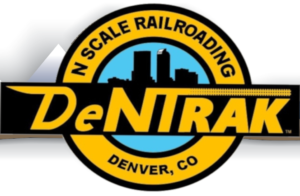Layout setup & tear down procedures
The purpose of creating N-TRAK layouts is for all who participate to enjoy operating model trains. Therefore, the goal of these procedures is to provide guidelines for creating an N-TRAK layout of any size while following prescribed standard specifications used in the building on N-Scale modules intended for interconnection and inter- operations. All participating modules are expected to comply with national N-TRAK standards & specifications and will not be explicitly provided within this document. Please refer to the “N-TRAK Modular Railroading Society” for reference to associated standards & specifications.
The successful creation of an NTRAK layout requires participation from individuals willing to perform tasks and exercise certain responsibilities in a coordinated effort. The Denver N-TRAK Club known as “DeNtrak” represents the primary source for individual participants expected to fulfill the task requirements & responsibilities deemed necessary for creating an N-TRAK layout.
General Setup Guidelines
- The DeNtrak club president typically coordinates shows & events while providing a good faith effort to notify members & non-members previously identified as interested individuals. NOTE: The coordinator responsibilities may be assigned to another club member by the president when necessary.
- A layout design depicting the overall size and module positions should be made available during the initial setup procedure and distributed electronically to expected participants if possible.
- An operational sign-up sheet should be utilized for running up to 2 model trains per track (Red [3 when large enough], Yellow and Blue) during 2- hour intervals based upon the available time at a given show or event.
- Individuals who submit N-TRAK modules for creating a layout should enjoy preferential treatment when signing up for operational intervals during a given show or event each typically lasting for 2-hours.
- The DeNtrak club can be expected to provide the DCC system, curtains, stanchions, club corners, bridges, set up yard and rope to complete the presentation quality appearance of the layout for the show or event.
- All module owners are responsible for making their modules present and available and for inspection at the designated setup time.
- Any new modules must be inspected and cleared by a designated officer of the club. Specifically all electrical connections are correct and a visual overall inspection of the module.
- Three Atlas 5″ track crossing sections for interconnecting their module(s) with a neighboring module. Right side of the module, looking from the public side of the module.
- Owners are responsible for connecting the wires to the same right side. If next to a club module, owner must connect both sides of club module.
- Multiple club modules joined together (Such as yard set up modules) will have a person(s) assigned to set up club modules.
- All available members & non-members should assist bringing in the common equipment (such as the DCC system). NOTE: Set the stanchions & rope outside of the planned layout for later placement. Red top poles for main gate.
- All modules should be standing & packed in their position relative to the planned layout. Set by owner 40 inches from the ground to the top of the roadbed & as level as possible. Clean track and Scenery dusted.
- A group of 3 to 6 members/helpers should be assigned to level & clamp modules starting at the gate. With separate loops, 2nd loop start with junction module.
- NOTE: Those members with multiple modules should assume responsibility to perform the necessary module interconnecting required for their modules.
- The DCC system should be placed in a convenient location with track wiring attached between modules in close proximity.
- An engine with an attached cleaning car should be used to test each line Red, Yellow & Blue including yard branches where appropriate. Members are encouraged to bring engines and cleaning cars as well as track tools.
Jobs to be Completed
- Club modules Yard (2-4)
- DCC (1-2)
- Leveling Crew (3-6)
- Stanchions & Rope (1-2)
- Curtains (1-2)
- Radios & Battery set up (1)
- DeNtrak sign
Tear Down
- Everybody stays until we are all packed up! (Or cleared to leave by the coordinator)
Operating Guidelines
- Length of trains determined by length of set up track modules. (Yard)
- Two trains per main line. Red line may have three if main line is long enough. May have three trains per line if the other 2 operators agree and trains are short enough.
- Radios are helpful and encouraged on large set ups.
- Two hour window and when needed 1 1/2 hours will be used for running trains. Can be extended if no other operators available. Please set up 15 minutes before scheduled run times. And please use one train for the two hours and do not keep switching out trains. It is desirable to have 6 trains running at all times.
- Engines that do not run correctly and rolling stock that keeps derailing should be promptly removed from a train.
- A trouble shooting notebook will be available for all modules. If you have continuous problems or a module becomes a problem during the show please make a note in the book and tell one of the officers of the club.
And lastly be good ambassadors of model railroading in general and specifically N scale. Engage the public. Be friendly, courteous and answer their questions. Do not be afraid to say I don’t know and be willing to find somebody that can answer their question. Most importantly have fun and a good attitude and that will translate to everyone what we all know, that this is the best hobby ever!
